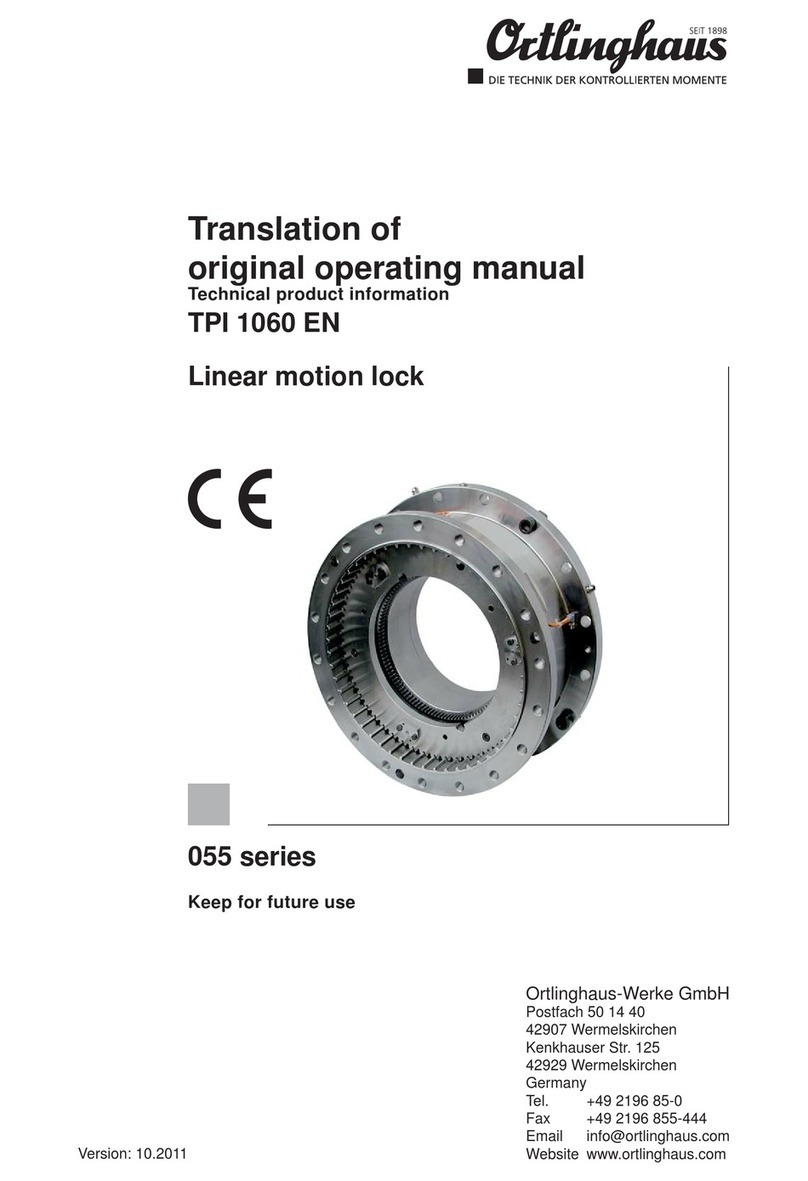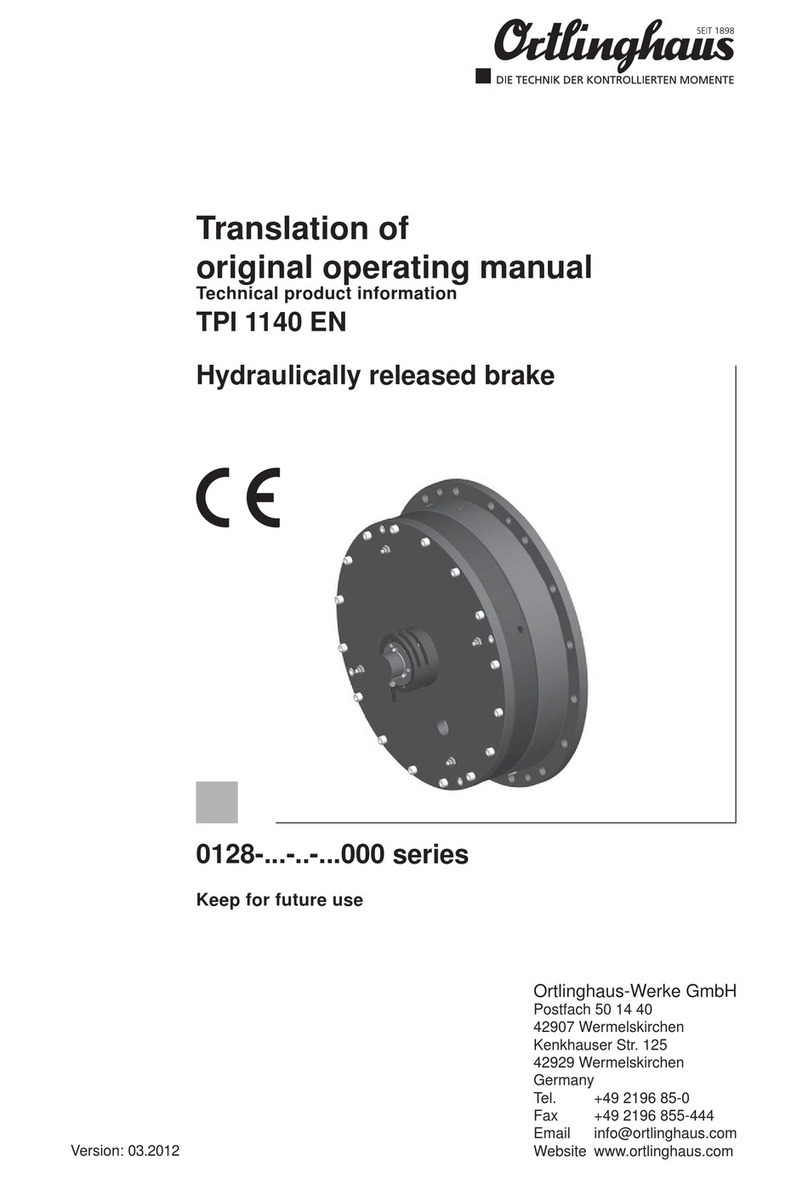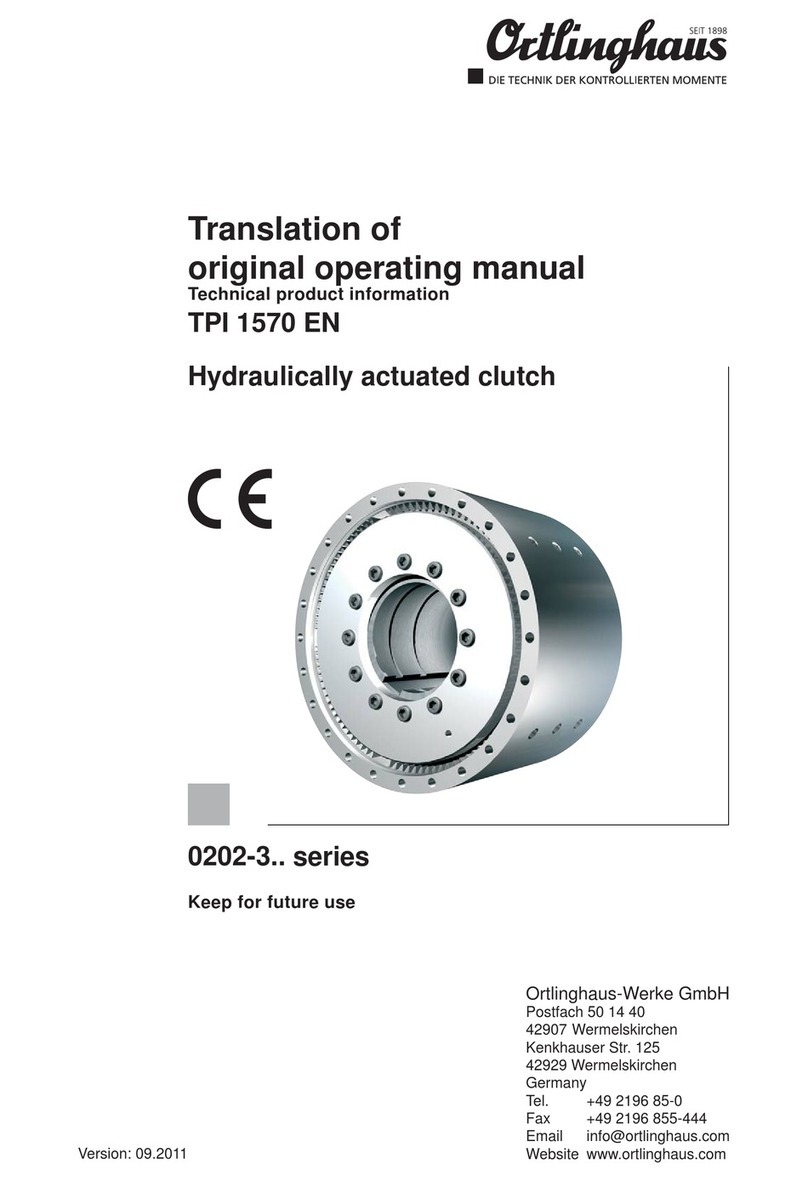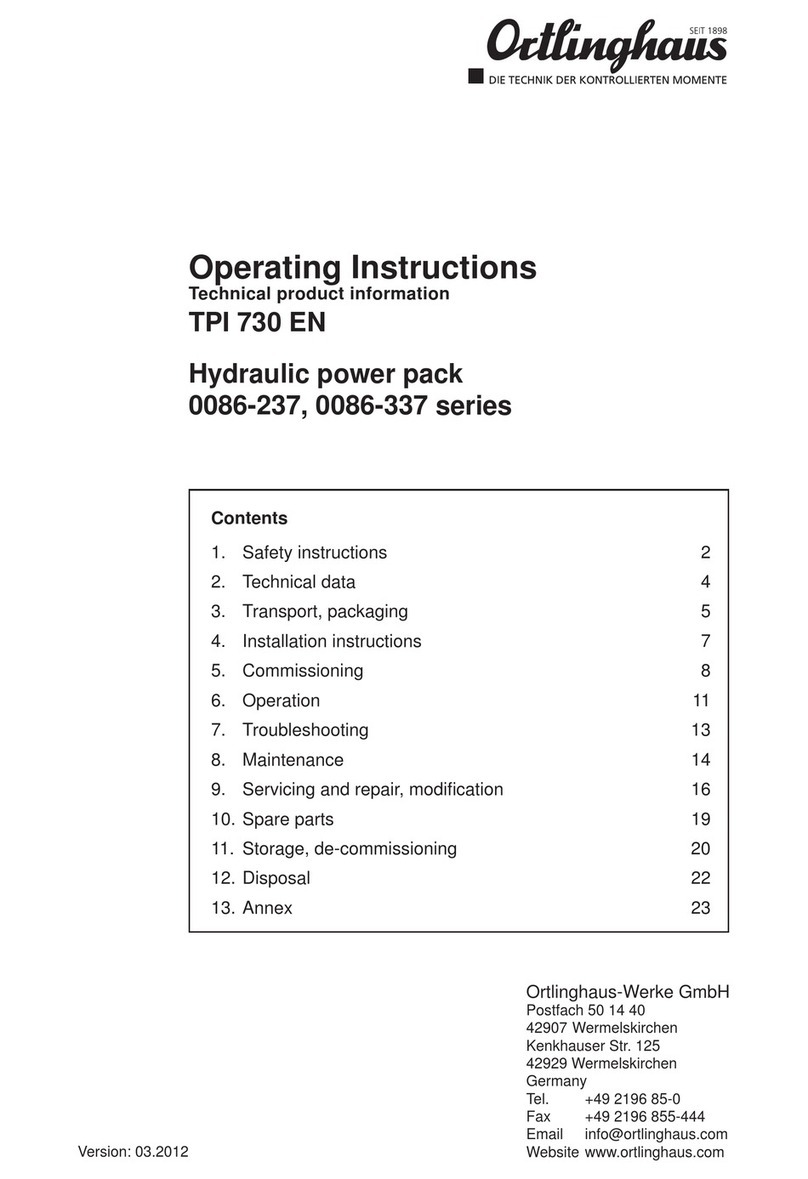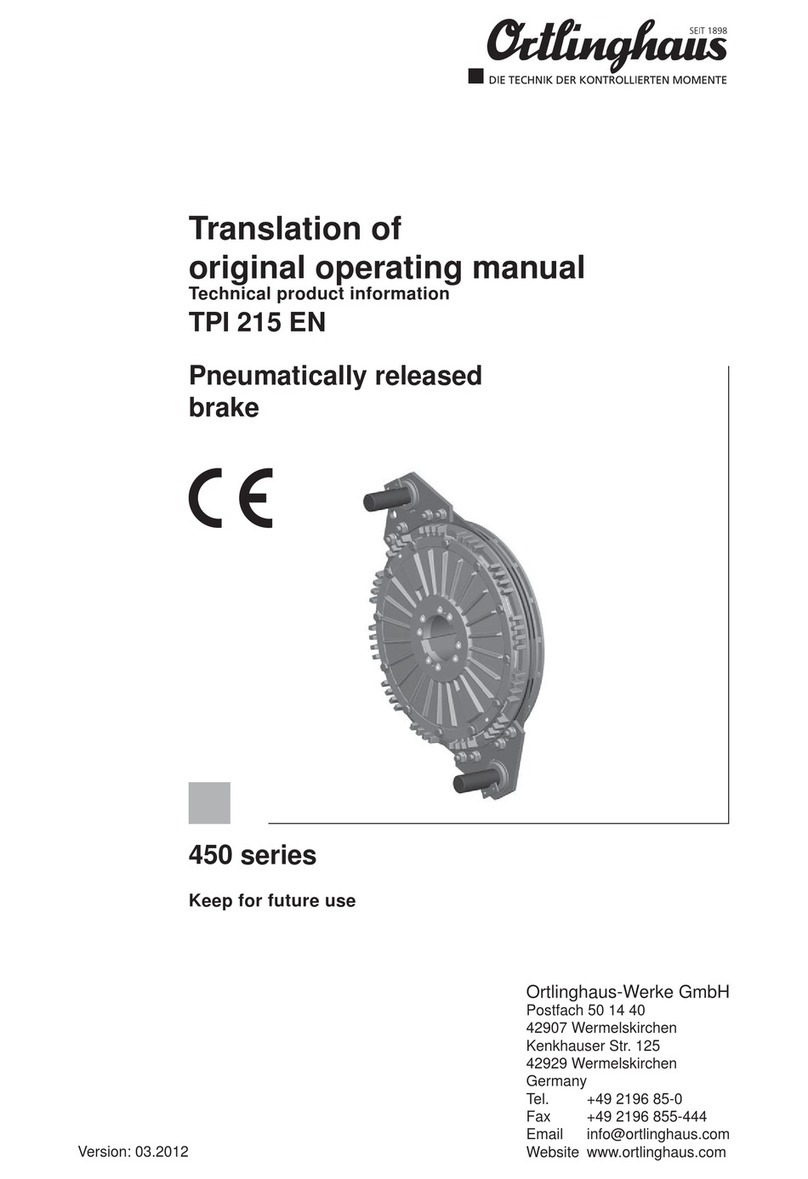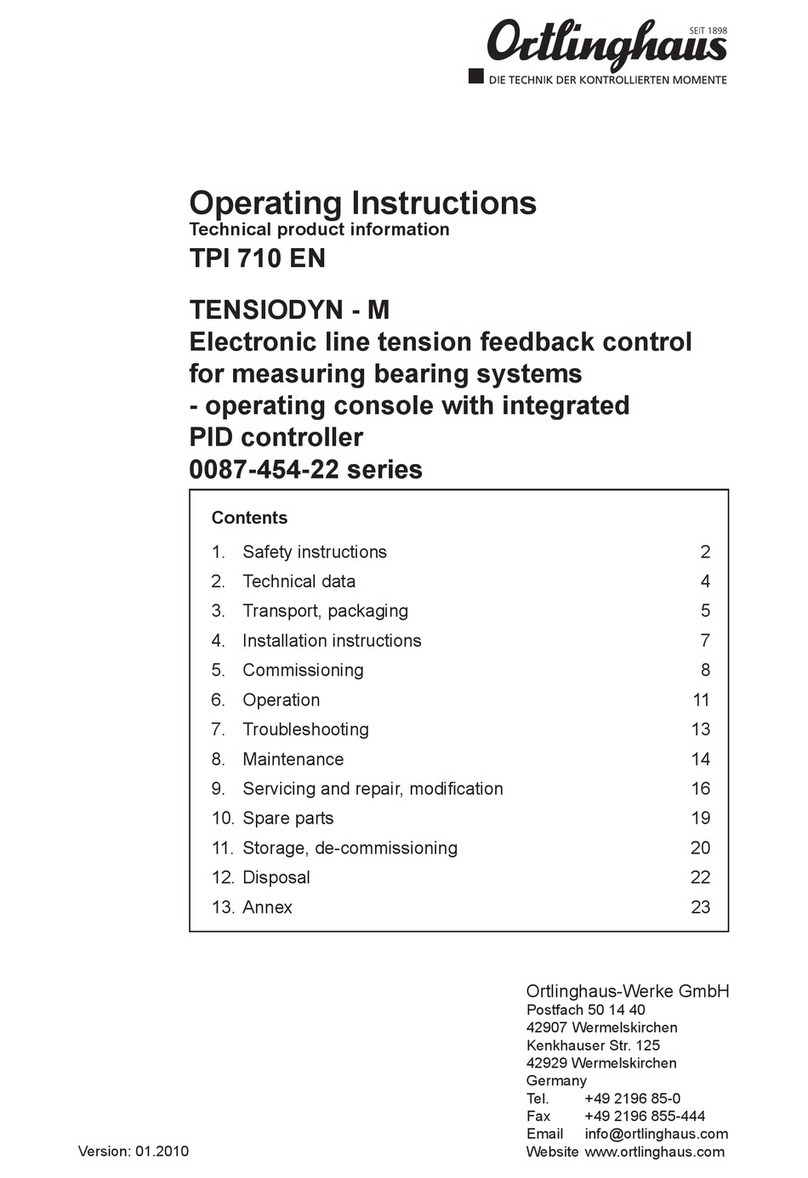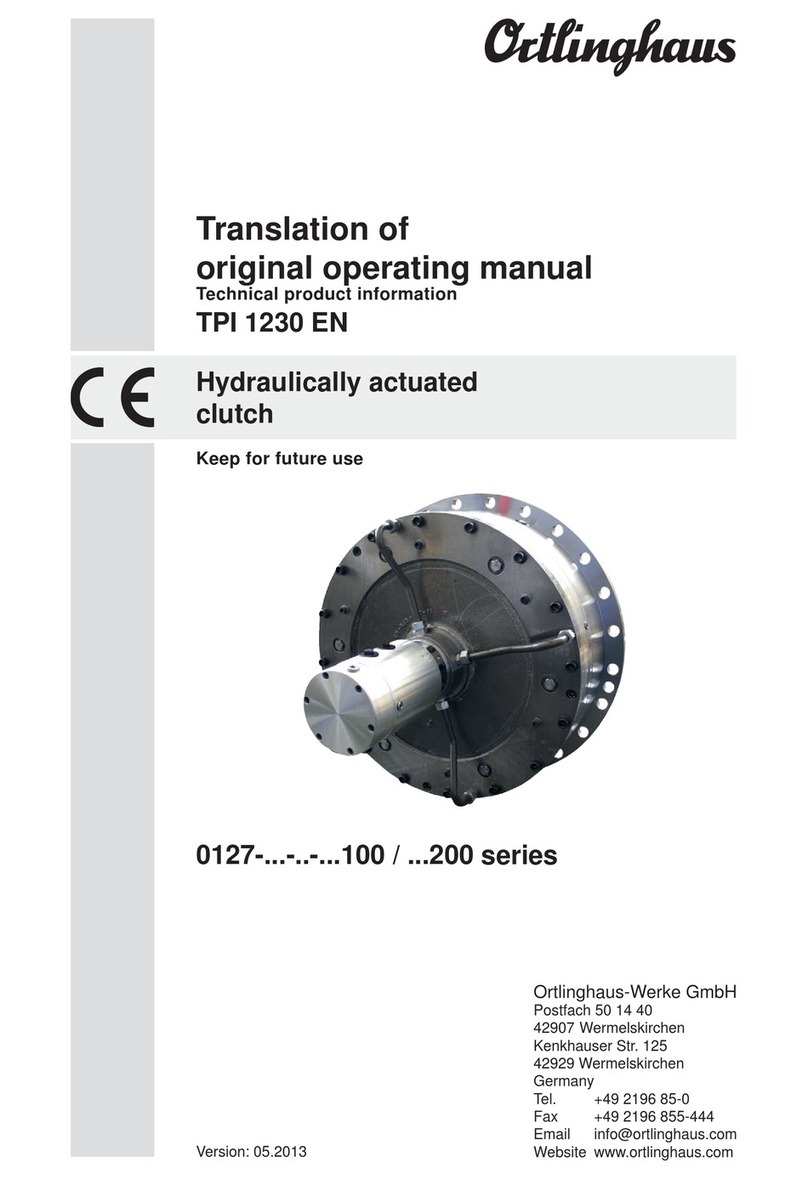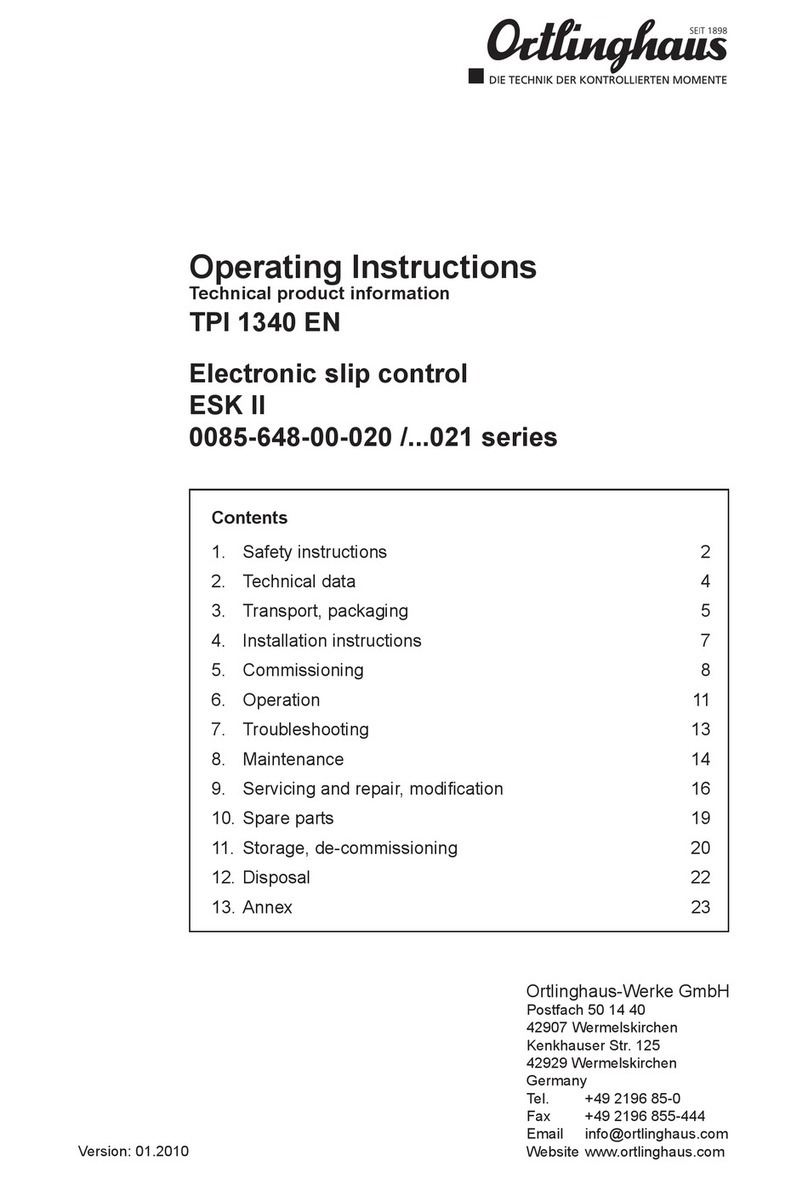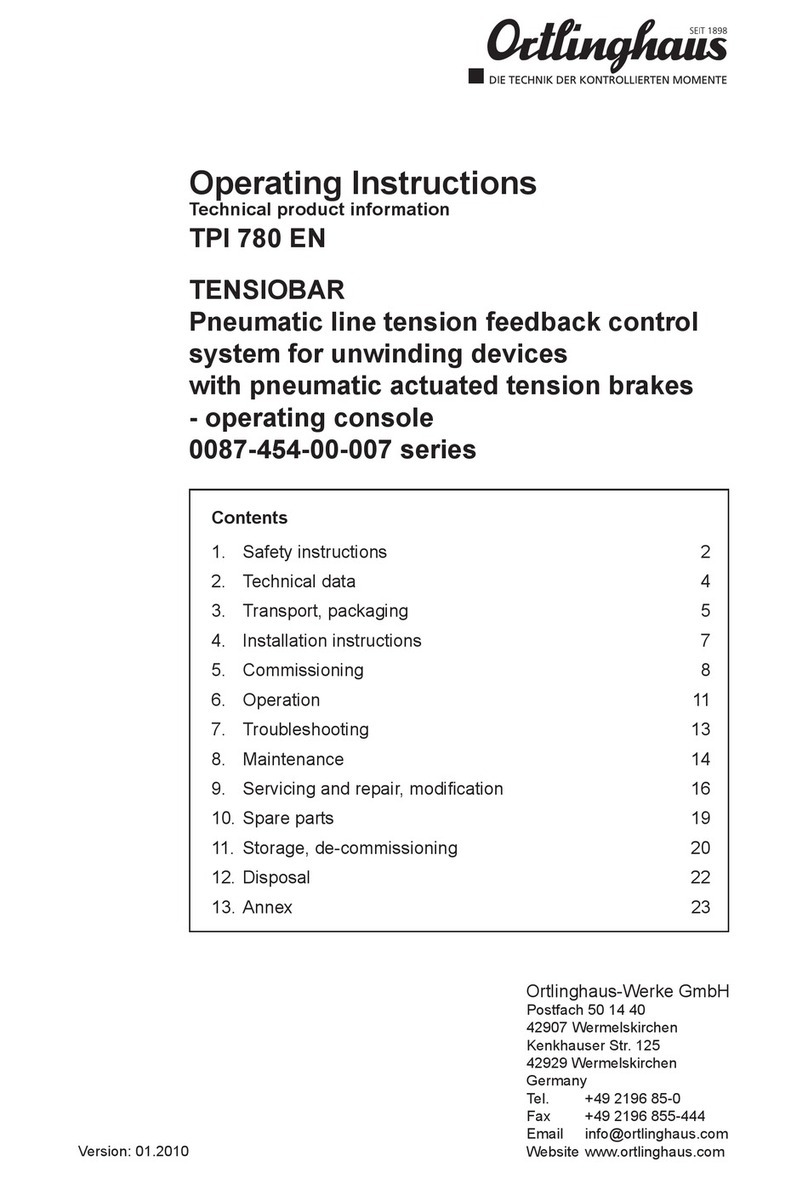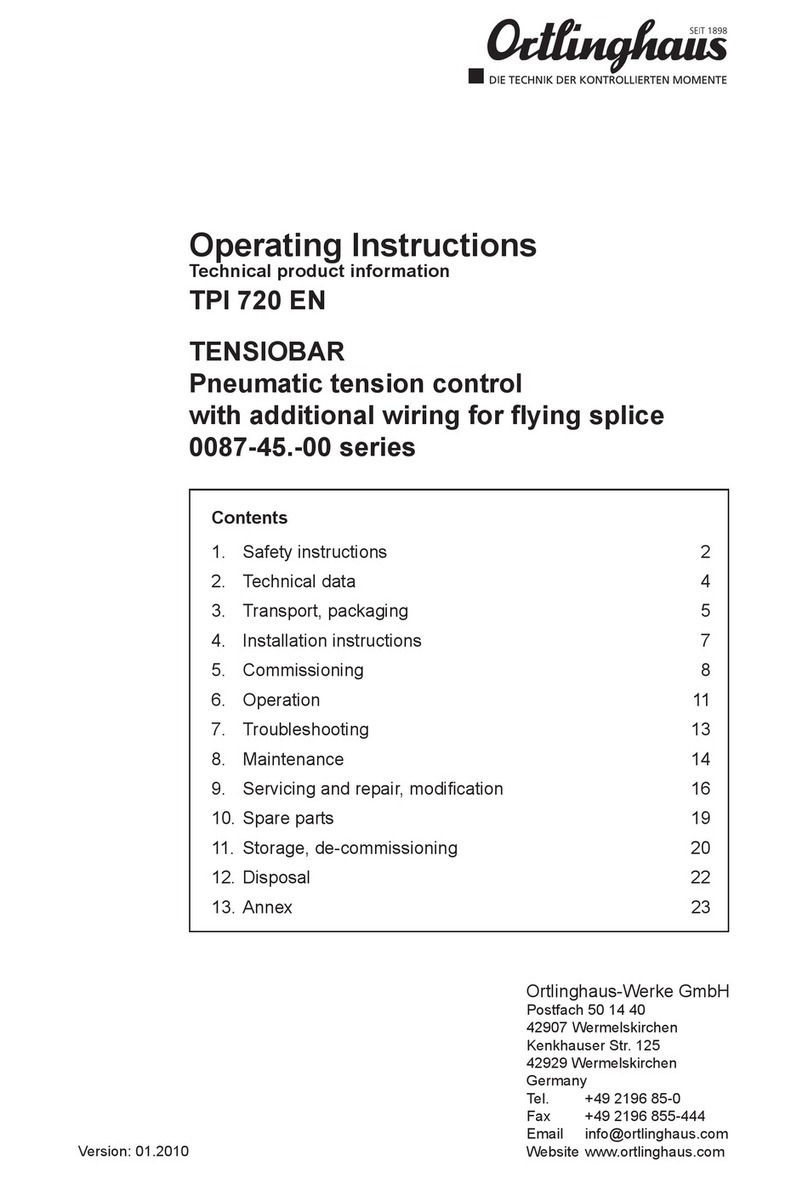
Ortlinghaus-Werke GmbH Operating instructions TPI 1240 EN
11.2011 3
1. Notes regarding use of the operating manual
These operating instructions, hereafter referred to as OI, are part of the
product and contain important information on how to safely and correctly
operate our product in machinery and plant systems as well as maintain,
repair, convert, store, decommission and dispose of the product.
In addition to these OI please also refer to the technical descriptions and
information provided in the product drawing as well as the application-
specific design data, e.g. design calculations. If these should not be
contained within the scope of documentation then please request these
immediately from Ortlinghaus.
Without the product drawing these OI are incomplete.
Keep these OI in a safe place, make them accessible to all users at all
times and pass them on to your customers! If necessary, you can down-
load our OI or TPI via the internet from the “Service” directory at www.
ortlinghaus.com. You are also free to make copies of this example. Always
keep the OI near to the machine or system in order to ensure direct acces-
sibility.
On delivery of the product, the attached OI represent the latest technical
development at the time of publication. Any supplements provided by us
should be added to the OI by you or future owners.
We reserve the right to make technical changes to these OI as part of tech-
nical further development. Please ensure that you have the most recent
version of the information.
This information can be requested by telephone (for telephone number see
front page) and obtained in text form or downloaded from the internet at
www.ortlinghaus.com under “Download”.
1.1. Who are the operating instructions aimed at?
These OI are aimed at qualified specialist personnel, especially:
➜assembly fitters of the machinery/plant system manufacturer;
➜industrial mechanics/fitters of the machinery operator;
➜other qualified and properly trained specialist personnel, responsible for
and thereby entrusted with project planning, assembly, commissioning,
operation, maintenance, decommissioning, storage and disposal of the
product.
Persons tasked with using the product must read the OI carefully before
conducting any work. If these prerequisites are not fulfilled, there is a risk
of the product being used incorrectly with severe damage to the product
and subsequent damage to other items as well as physical or fatal injury
and health hazards to the user or third parties. Reference is made in addi-
tion to paragraph 1.5 of the OI.
